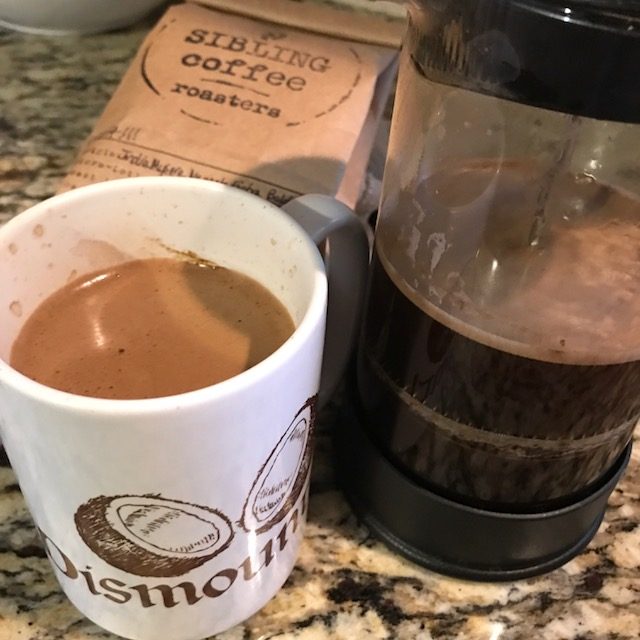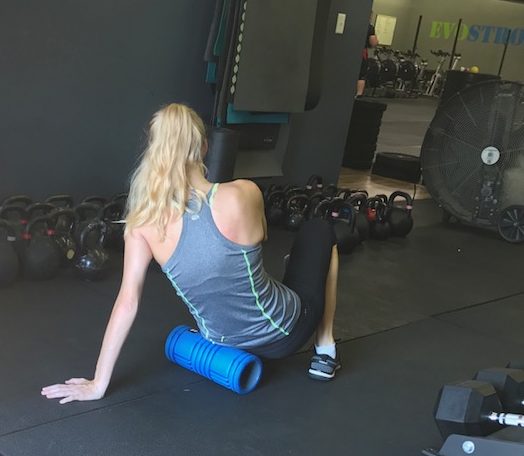Preventing Soreness after Exercise
As we wrote in this prior post, muscle pain is expected after certain kinds of work out. Of course, temporary soreness is a small price to pay for long-term health and fitness. But if you can reduce pain easily, why wouldn’t you? Fortunately, there are many ways of preventing soreness after exercise while still getting a solid sweat going!
If you are just starting an exercise program, you are going to be pretty sore after your first few workouts. And today’s popular HIIT-focused classes often cause some pretty unholy levels of pain. And causing pain is usually a pretty poor way of recruiting and retaining clients and customers. So it’s up to gym owners and coaches to help their athletes handle these problems.
The first step is to warn new clients about delayed-onset muscle soreness (DOMS.) People prepared for pain handle it much better. The second step is to give them tips to help alleviate the pain. If you own or coach at a gym, just share this post in your Facebook group to help your athletes feel better faster! Most of these steps are simple to implement and easy to remember. And remember, as the body adapts to exercise soreness becomes less frequent and less severe!
Top Ways to Prevent Soreness After Workouts
DOMS Prevention: Anti-inflammatories
Over-the-counter anti-inflammatories like ibuprofen and naproxen can help to prevent workout soreness if taken a couple hours before a workout. And they can also help when taken afterward also, it’s just not as effective. Prevention works better than a cure, as usual! So if you are just starting a new workout regimen, it’s probably best to pop a couple ibuprofen before working out.
Some people can’t take these meds though, especially people on blood thinners. Follow your doctor’s recommendations in this regard. Secondly, there is concern that these meds may decrease your muscle growth. The worry is that inflammation is needed for muscular repair, and halting it could decrease your hard-won gains. But rest easy knowing that this is typically more of a concern for elite competitive athletes rather than beginners. As a beginner
DOMS Prevention: Caffeine
Is there any problem coffee can’t solve? Probably not! Caffeine has long been known to acutely improve athletic performance. And more good news: it looks like caffeine may be helpful in preventing DOMS as well. Two recent studies showed that caffeine can significantly reduce the pain you feel for days after an intense workout. Now the doses they studied were equivalent to about four cups of coffee a day and the study participants did not drink caffeine regularly. So maybe your 6-java-a-day habit is helping, but if you are used to it then maybe not. All we know for sure is if your hands shake too badly to load weights on the bar you’ve probably had too much!

DOMS Prevention: Eccentric Assistance
Assistance during the eccentric phase of exercises can help quite a bit as well. Soreness occurs mostly because of the eccentric part of exercises. If you can provide support of these motions, new athletes will be less sore. Pole squats are a great example. The victim, er… I mean athlete can use their own upper body strength to assist their legs while lowering themselves into a squat position. Using resistance bands to support the body weight can help as well. This reduces the eccentric damage to muscles that causes soreness the next day. While it may slightly decrease the strength gains of a new athlete, it will make them far more likely to return for another class. Short term compromise for a long term win!
DOMS Prevention: Moist Heat
Most of my patients want to know if ice or heat works better for pain. The answer depends largely on the source of the pain. But if you are trying to prevent DOMS, the evidence clearly shows heat is better. And moist heat can prevent pain after exercise with much shorter treatments than dry heat. Even though you may want to cool down quickly after a WOD, it’s best to keep warm!
One great way would be with a sauna, hot tub, or warm shower after the gym. The minimum time for heat to produce benefits isn’t known. But most studies use chemical moist heating pads applied for 2 hours. This has the same benefit as using a dry heating pad for 8 hours!

DOMS Prevention: Foam Rolling
Foam Rolling is known in scientific circles as Self Myofascial Release. It is rapidly gaining popularity as a mobility and recovery aid in the HIIT community. Along with standard massage, foam rolling has been shown to cause an appreciable decrease in pain after exercise. Foam rolling seems to help best when performed immediately after a vigorous workout. But it can help loosen your muscles and decrease pain even days later!
Not sure how to target your sore muscles? Check out 8 Simple Foam Roller Exercises here!
DOMS Prevention: Active Recovery
Returning to the gym is the best way to prevent and relieve muscle pain after exercise. If you are sore, nothing makes you feel better faster than a nice easy warm up. Unfortunately, the effects are somewhat short lived and you will have more DOMS later if you go overboard. This lets your body heal the damage and get stronger while also relieving soreness. Getting the blood flowing to injured muscles can really help them heal and loosen up. Interestingly, this phenomenon has nothing to do with lactic acid. Your body cleared that within hours of your workout!
DOMS Prevention: Dietary Supplements
Honestly, this deserved its own separate blog post, which you can read here. Suffice it to say that there is a lot of money to be made by selling recovery supplements. That means there are a lot of unregulated and untested pills, powders, and mixes out there. Most dietary supplements have little and often conflicting studies backing them up.
That’s why I personally think these should be considered as additive treatments. Most athletes should stick with the tried and true methods above. None of these really seem to be a magical “Get Out of DOMS Free!” card. I would say that competitive athletes who need every advantage will be the ones who find supplements the most helpful. A few supplements have strong data to support them, even if the number of studies behind that is limited.
Supplements Likely to Relieve DOMS:
Omega-3 Fatty Acid
Taurine
Saffron
Polyphenols (like those in cherry and pomegranate juice)
DOMS Prevention: Myths
There are plenty of myths out there regarding workout recovery and prevention of pain after exercise. These include cryotherapy, static stretching, ultrasound, and several others. Instagram is full of muscular Icelandic women showing how they use these methods for recovery. Unfortunately, a lot of recovery methods don’t help as much as we would hope. Many of these methods may provide other benefits, but they don’t seem to reduce post-workout pain. We’ll be following up in short order with posts about those, so sign up for our email list to get them delivered right to your inbox!
Works Cited
Beardsley, C, and J Škarabot. “Effects of Self-Myofascial Release: A Systematic Review.” Journal of Bodywork and Movement Therapies.
Cheatham, S W, et al. “THE EFFECTS OF SELF-MYOFASCIAL RELEASE USING A FOAM ROLL OR ROLLER MASSAGER ON JOINT RANGE OF MOTION, MUSCLE RECOVERY, AND PERFORMANCE: A SYSTEMATIC REVIEW.” International Journal of Sports Physical Therapy.
Hohenauer, E, et al. “The Effect of Post-Exercise Cryotherapy on Recovery Characteristics: A Systematic Review and Meta-Analysis.” PloS One.
Hurley, C F, et al. “The Effect of Caffeine Ingestion on Delayed Onset Muscle Soreness.” Journal of Strength and Conditioning Research.
Khamwong, P, et al. “Prophylactic Effects of Sauna on Delayed-Onset Muscle Soreness of the Wrist Extensors.” Asian Journal of Sports Medicine.
Kim, Jooyoung, and Joohyung Lee. “A Review of Nutritional Intervention on Delayed Onset Muscle Soreness. Part I.” Journal of Exercise Rehabilitation, vol. 10, no. 6, 2014
Maridakis, Victor, et al. “Caffeine Attenuates Delayed-Onset Muscle Pain and Force Loss Following Eccentric Exercise.” The Journal of Pain, vol. 8, no. 3, 2007
Petrofsky. “Moist Heat or Dry Heat for Delayed Onset Muscle Soreness.” Journal of Clinical Medicine Research, 2013

